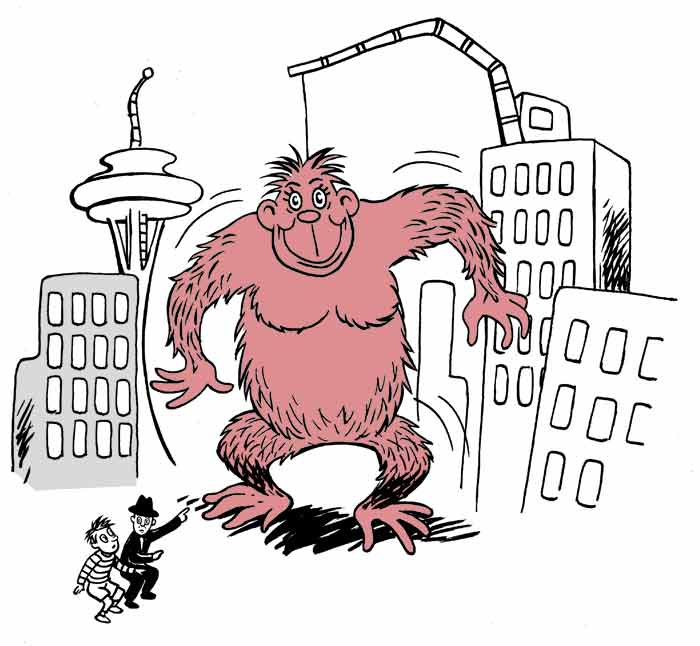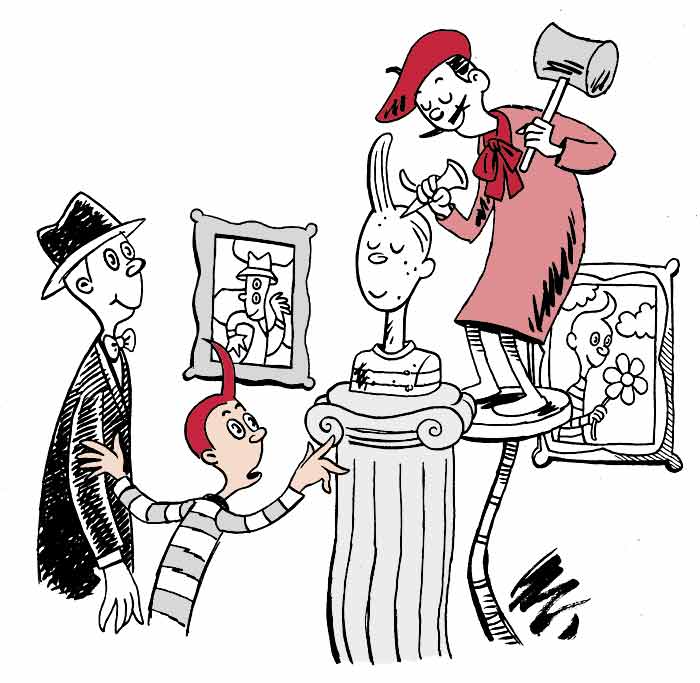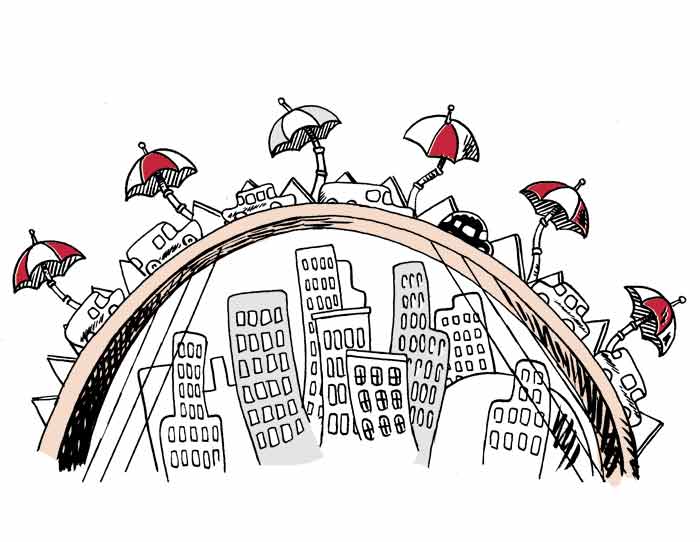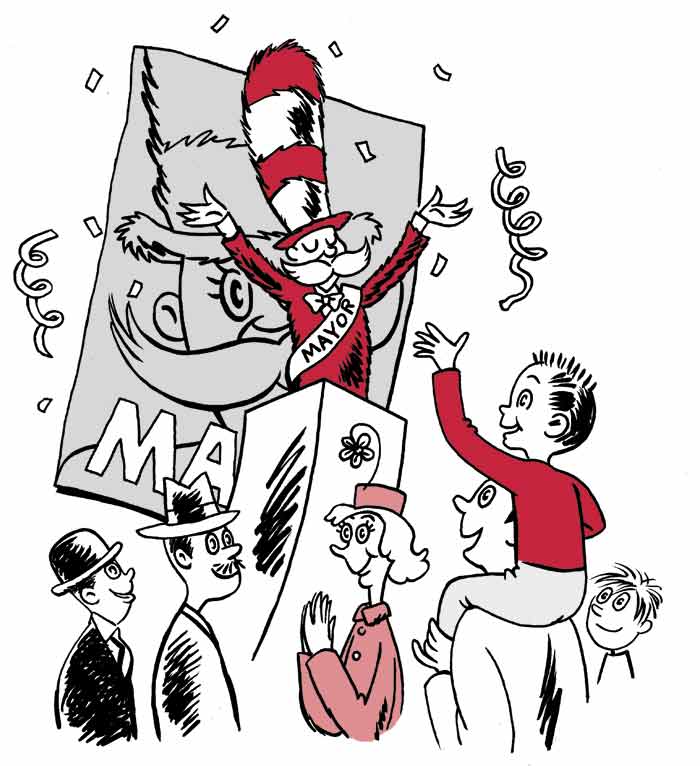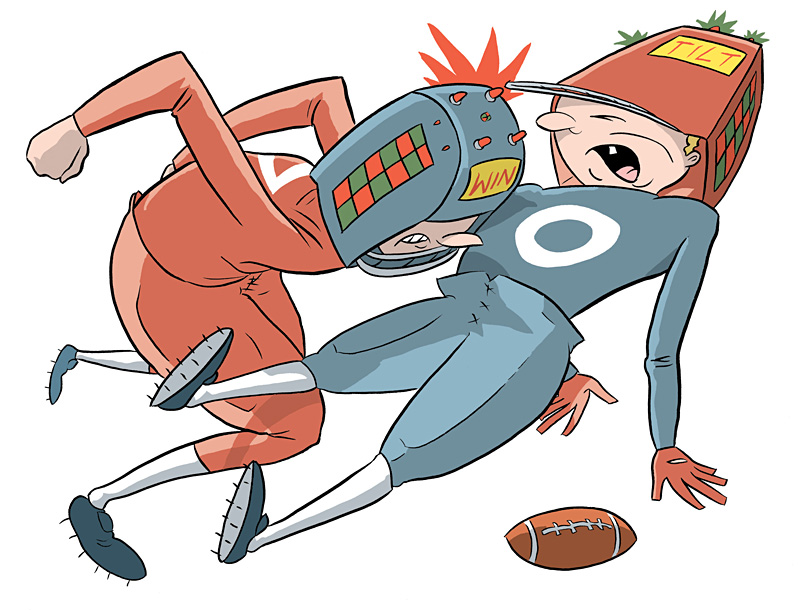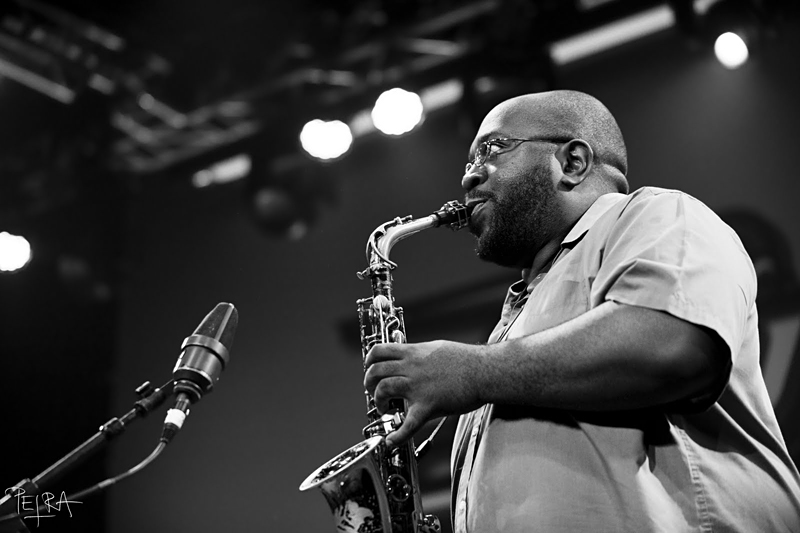With hot races underway for Seattle mayor and King County Executive (and not much talk about the arts among the candidates), we decided it was time to put local artists in charge—at least in our pages. We asked a half-dozen Seattle talents who’ve got promising shows coming up this fall to give us their ideas on ways to remake the city. What if they had all the power and all the money for a change? Their ideas ranged from the sensible to the Seussical.
SUBVERT THE SEAFAIR PARADE!
David Armstrong, the Producing Artistic Director of the 5th Avenue Theatre, knows one or two things about how to execute elaborate entertainments. Since he took on the AD job in 2000, the 5th Avenue has become one of the country’s most important launching pads for new, Broadway-bound musicals. Results have been wildly successful (Hairspray, Shrek), and, on occasion, something less than that (Lone Star Love). But if there’s one theater in town with a clear identity, it’s the 5th—Seattle’s home for full-on, all-the-trimmings productions of recent and long-loved song-and-dance spectacles. This fall at the 5th, Dusty 45s front man Billy Joe Huels will be Pharaoh, and American Idol ’05 finalist Anthony Fedorov will play the titular Israelite, in Joseph and the Amazing Technicolor Dreamcoat, which opens Thurs., Oct. 15. We talked to Armstrong about how to make Seafair fun and relevant again.
I love a parade, I’m a sucker for a pageant. I think having the marching bands and drill teams can all be great, but it seems like we’re taking the easiest way out; it’s the easiest parade possible, as opposed to the most fabulous parade possible.
I’ve been to the parade, the air show, the hydroplanes. And I’m not sure what it means to Seattle, or that it represents Seattle very well. Maybe it did back in the ’50s. Last time I was at the parade, it was full of beauty queens. [There’s a Miss Seafair and three Princesses, chosen “based on academic achievement, community involvement, public speaking, and creative expression.”] It just seems stuck in the past. We’ve got lots of queens in Seattle. I think there can be a more fun, more inclusive way to celebrate beauty in Seattle—a 21st-century beauty celebration, instead of a watered-down Miss America.
If we’re going to do a giant event, it should be what Seattle’s about now. From my point of view, of course, we’re a theater and arts town. I’d much rather see the whole thing turned into a big arts festival like Edinburgh or Spoleto. The people who could make a really great parade are the people who create art in this town. Get someone each year to be the parade’s artistic director and visionary. It could have more of a carnevale aspect, with crowds of people dancing down the street. It could go from venue to venue. I certainly think it could have more drama.
A fundamental question is: What is Seafair even celebrating? Obviously, it’s in some way about the water that surrounds us. But I don’t know that that’s clear to anybody, other than that we have hydroplane races. Maybe the parade needs to start at Puget Sound, go up Madison Street, and end at Lake Washington—and tell more of a story. Maybe it continues in boats across the lake all the way over to Bill Gates’ house. Where there’s a cookout.
[What about the pirates?] Uh, I think the pirates need some work…
FIGHT TRAFFIC USING THE WONDERS OF CHOREOGRAPHY
Dancer and choreographer Catherine Cabeen spent 11 years in New York City, so she knows what it’s like to enjoy a carless lifestyle. And she marvels at the unmoving snarl of traffic that collects every afternoon outside her apartment building, near the Olive Way entrance to I-5. Since moving to Seattle in 2006, Cabeen’s gotten a BFA at Cornish and an MFA from the UW, and performed in the 12 Minutes Max and Northwest New Works showcases at On the Boards. This fall, she’s one of a dozen Northwest choreographers chosen to take part in The A.W.A.R.D. Show!—a dance-off with a $10,000 prize. Over three evenings, each choreographer will present a piece of 15 minutes or less, audiences will vote, and the finalists will have it out on the fourth night. Started by the Joyce Theater in New York a few years ago, A.W.A.R.D. is expanding to three more cities this year, with the Seattle edition taking place at On the Boards, Dec. 10–13.
For her competition entry, a solo piece called Segments, Cabeen is working with the theme of constricted motion. She created it in 2006, while recovering from a broken bone in her foot. The movement is “on a very narrow, contained pathway,” she says. “It’s almost baroque in its micro-details”—a phenomenon familiar to any rush-hour commuter. Here are her thoughts on solving vehicular congestion:
All of those big intersections around I-5 that are just gridlocked and blocked—maybe there need to be conductors of the traffic at those intersections, rather than mechanical lights. In choreography, there’s all sorts of ways to make interweaving traffic patterns with people, where—just like a zipper—they close in behind one another. It would be so fantastic if there could be someone—of course it would have to be a gooooorgeous dancing police officer—dancing and waving these batons around that would allow a car from each of the angles to weave into the path so that the traffic could move in streams, rather than the stop-and-start of the traffic lights, which just leads to road rage. They could coax the cars through with big beautiful flags. We need traffic fairies to descend on intersections and wave people into motion. Certainly curves are easier to move in than 90-degree angles, which would create an obstacle in terms of the way the city is constructed.
What you really need to create cohesive group choreography is to have individuals who recognize they’re part of a larger system. And to have each of the movers know their movement is not the most important. What is most important is that they fit into this flow. And there’s a sort of cycle that can be set up for performers, where if they can let go of their ego just enough to really absorb themselves in the movement of the space, then the space can lift and support their intention. That sounds very metaphysical. But one of the biggest problems with the car culture is that it literally physically isolates people in these tin boxes, and then they think they are the only ones who need to get somewhere. There might need to be some sort of music playing. What if instead of the red and green of traffic lights, there was some fantastic waltz? I think the audio stimulus helps people have that sense of being connected to something larger than themselves. The sound really saturates whole spaces and connects people. So maybe there would need to be some musicians and composers involved to literally orchestrate the intersection.
ANIMATE THE SKYLINE
Finger puppets may be having their hipster moment, but Brian Kooser is sticking to the larger-scale creatures that have made his work so distinctively strange, sweet, satiric, and crude. His previous shows—Frankenocchio, Dracula: A Case Study, and UFO: The Puppet Show—have all had fun cannibalizing familiar narratives. So too his newest work. Kooser is marking the 500th anniversary of the coronation of England’s King Henry VIII with what he calls an “hysterically accurate” depiction of the monarch’s reign in all its “unsanitary glamour.” Bloody Henry opens Sept. 24 at Seattle University’s Lee Center for the Arts, and runs Thurs.–Sat. for a month.
While he’s done previous productions on a shoe (or marionette) string, Kooser’s being funded this time by many of Seattle’s public grant-making bodies. Bloody Henry will have “upwards of 75 puppets” and larger, more elaborate sets than he’s ever done, he says. A regular participant in the Fremont Solstice Parade, for which he has constructed giant puppets atop moving floats (this year’s creation: the Pope, carrying Westminster Abbey on his back), Kooser naturally sees the world in terms of opportunities to bring the inanimate to life. And that’s where his mind went when we asked him to remake the city.
I have noticed that Seattle has a number of gigantic orange cranes at its port. They are not terribly attractive things, and painting them orange just made them more noticeable. There are also construction cranes throughout the city littering the skyline. I propose that these cranes be utilized as skeletons for giant puppets. Of course we would leave them functional, but wouldn’t it be more interesting to look out of your overpriced downtown condo and see a herd of brontosauruses unloading the ships at the port? How about giant robots constructing skyscrapers like oversized children playing with Tinkertoys?
We would use the cranes as a skeleton, building the giant puppets over the existing structure, skinning them, as it were, with lightweight foam that’s full-painted to look like brontosaurus skin or robot metal. The visibility through the crane would probably not be as good, but you can keep the bottoms of them open and all the moving parts clear. I’ve built puppets over the top of machines with more moving parts than that. Not quite as big, of course.
Unused cranes could also be utilized to operate enormous marionettes for special events like parades and festivals.I believe that people would embrace these changes. They would dream about the day that new construction started in their neighborhood, even demanding that changes happen today so that a gargantuan gorilla would spend a week or two in their proximity.I have developed the plans for these puppets, and am ready to go to work right after Bloody Henry opens.
GET THE PUBLIC INTERESTEDIN ART!
Every time artsjournal.com links another “Oooh, look! Chamber music in a bar!” article, we remember how the Young Composers Collective got there 15 years ago. That’s when composer/instrumentalist Joshua Kohl, Haruko Nishimura, and a bunch of Cornish College compatriots launched the group, playing their no-boundaries music everywhere but traditional concert halls. Since then, they’ve expanded; live original music is just one aspect of their dance/opera/movement/theater shows, so they adopted a new name, the Degenerate Art Ensemble. This fall (Oct. 30–31), DAE will performing Sonic Tales at the Moore Theatre, billed as their “most ambitious work to date…idiosyncratic movement style and hallucinatory visuals.” We sought his other ideas on bringing art to the citizenry.
With public art, so much of the time it’s the city saying, “We want a giant salmon—who can make it? Here’s $50,000.” Or: “We need a big metal thing to go right here.” And then some people like it and some people don’t. I’d like to bring creation of the work to the public. When we just see a finished painting, we have no insight into how it’s made. But when we see the process, it resonates. It piques people’s interest.
I would like to see huts or kiosks around the city that are basically art construction projects. It’s asking the artist to be a hamster in a Habitrail. In a train station, you could have a room with a glass-walled studio where an artist is working, and people could watch the work evolve. This wouldn’t be like setting up performance art in a window, where people walk by and gawk. The public would have an intimate relationship with the artmaking.
We learn by watching people do things. I love watching sidewalks being constructed—the smoothing process, it’s so exacting. The cool thing about art is you can give people an empty room and a pile of materials and just say, “Go for it.” And at the end of the month they come up with something quite amazing.
BUILD A NEW GATEWAY TO THE CITY
Production designer Etta Lilienthal is widely known as one of the city’s most talented people for setting a stage. This year alone she’s conjured an angular drawing-room battleground for Betrayal at Seattle Rep and a wild, billowy, absurdist lair for choreographer Maureen Whiting’s The Myth of Me and You at ACT. She’s currently working as Art Department Coordinator for The Details, the Tobey Maguire movie that’s finishing shooting in Seattle. This fall, she’s designing the sets for Opus, a new play about a high-strung string quartet, at Seattle Rep. It opens Oct. 30.
We asked her what part of Seattle she would most want to remake, if she could treat the city as her stage. She said the Yesler Way overpass: a steep and somewhat desolate stretch of Yesler Way which approaches downtown from the crest of a hill and arches over I-5, then over Fifth and Fourth Avenues, before rejoining the street grid at Third Avenue. It’s the seam where the International District, Pioneer Square, and downtown all meet.
I‘ve walked up and down that street for almost a decade, and it’s such an incredible view. That pathway seems like an invitation into the city, but it doesn’t actually invite a passerby into the city at all, especially the ID, which is one of the most vibrant parts of Seattle. You go down Yesler, and there’s all these smashed windows on all the cars. You wouldn’t want to turn down any of those side streets. It’s dirty and dangerous-looking. There’s a lot of crime right there. It’s the oldest throughway, and it’s really been left behind. The Smith Tower is right there. And there are all those new galleries at the Tashiro Kaplan building. It’s the link to the waterfront. But right now it’s just kind of a weird, scary street.
I am envisioning a complete redesign of the Yesler bridge as it encounters downtown, the International District, and Pioneer Square. I have this vision of opening up that corridor and having it be an inviting passageway into the city, rather than being this weird kind of liminal throughway. My plan would be to tear out the heaviness of that bridge and do something like Santiago Calatrava [a Spanish architect known for his graceful forms]. These bridges he does, they’re very ephemeral, light, organic structures. I’d like to reconstruct the bridge to be a transparent kind of membrane that you can still drive over and walk over. Rather than blocking all the sights and pathways, it would open up to everything above and below. Then I’d carry the design all the way through, reintegrating this structure down Yesler, sending the sculptural elements off to the side, re-landscaping.
There’s a lot of potential for green in those areas. To me it’s about bringing visibility. I have an image of getting rid of all the parking lots there, on Sixth Avenue at the crest of that hill, and just doing a big greenscape. Open up the visibility of that street to the rest of the city, and give it an airy, sweeping quality. Like the way the Olympic Sculpture Park opened up the north end of downtown.
MAKE OUR CANDIDATES MORE MAYORAL
Actor Hans Altwies is the lean jungle cat of the mainstages. Whether at the Rep, Intiman, or with Seattle Shakespeare Company, Altwies is almost always singled out by critics for his riveting intensity and conviction. He’s also very much the go-to guy when you need a Seattle actor who’ll look good with his shirt off. All those talents were well on display earlier this year in the infidelity drama Orange Flower Water—the second production of the actor-led New Century Theatre Company, which Altwies co-founded. He and actress Jennifer Lee Taylor engaged in one of the most heart-tearing scenes of more-or-less-consensual sex you’re likely to see.
This fall, Altwies will be appear in a political drama: Intiman’s production of Abe Lincoln in Illinois, which opens Oct. 9. He’s playing Josh Speed, Lincoln’s closest friend. “As a supporting character, he’s like the Horatio [from Hamlet],” says Altwies. “He has the best and most penetrating questions to ask Lincoln, and Lincoln hears him like he doesn’t hear others.”
Given that Altwies’ mind is on political matters, we asked the veteran actor how he would suggest our two candidates for mayor, Mike McGinn and Joe Mallahan, buff up their body language, vocal delivery, and general presentation.
If I was going to be McGinn’s handler, I would immediately put him into some other clothes. I saw him on the street the other day, and the guy is completely, perfectly a Seattle stereotype. He’s already got the liberals. If he’s going to get votes from—for lack of a better phrase—the other side, he needs to clean himself up a bit. He should shave his beard and sharpen up his clothes.
Joe Mallahan is the opposite. That guy should soften up a bit. He needs to look in the mirror and watch himself speak, and smile more and smooth it out. His voice is a little high, and a little tinny. He could slow down a bit. It would give him more confidence. When he’s sitting in a chair, he needs to work on a more relaxed posture, maybe cross his legs and lean back a bit. Also, Mallahan’s speechwriters should put some younger words in his mouth.
McGinn needs to pick his chin up a bit. And not slouch. And he needs to answer questions a little quicker and without so much apology. He’s being such a nice guy in all his answers. He needs to own it a little bit better. Put out his chest. Speak with a little more confidence. He looks timid.
There’s a video of him in some bar [on the night of the primary]—he’s sweating and yelling—it’s great. He looks so comfortable.
McGinn can also be a little more literate, use bigger words. He can frame larger, more Shakespearean thoughts, meaning the sentences are longer. [Right now] he’s being clear and he’s being basic. But his platform is too smart for that. He can use a full arsenal of intellect.
One of them [in a recent interview with KCTS] was squeezing his legs constantly. I think it was McGinn. Put your arms on the armrest. You’ve got to sit down and find that powerful sitting position. The kind of interlocked-fingers-against-the-stomach, leaning-forward-with-the-shoulders-hunched—that doesn’t work. That doesn’t work.
Something about Mallahan’s face, it looks Republican. He’s a handsome guy. But he needs a different pair of glasses. His posture’s pretty straight. He sits pretty powerfully. He has an aggressiveness that will yield results. When he’s answering a question, he doesn’t need to put anybody down. Completely opposite of McGinn, he can go easier. He can soothe people. His motivation, as an actor, should be to soothe and to smooth, because he comes across naturally as a little sharp.

